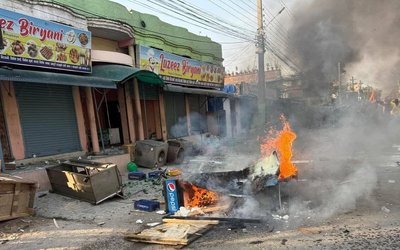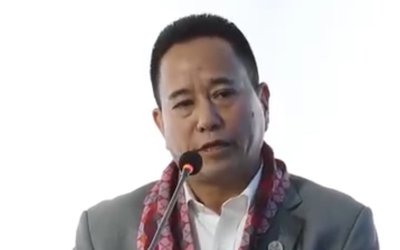The Ministry of Environment is in the process of sending the draft National Adaptation Program of Action (NAPA) to the cabinet for its final approval after the focal ministry presented the draft at the Climate Change Council meeting last week.
Prime Minister Madhav Kumar Nepal chaired the meeting. Purushottam Ghimire, joint secretary, focal point of UNFCC and National Program Director of National Adaptation Program of Action (NAPA) Project to Climate Change, presented the draft for discussions at the meeting on August 28.
“NAPA draft identified 243 projects under 6 thematic areas. Among them, 43 projects are identified as urgent and immediate projects needing implementation. For this, US$ 340 million is required,” Ghimire told the meeting. “ Out of US$ 340 million, donors have already committed US$120 million and major implementing partners include European Union, DFID, Pilot Project on Climate Resilience through climate investment fund,” said Ghimire.
When Ghimire was presenting the highlights of NAPA draft, prime minister Madhav Kumar Nepal raised various questions regarding the priorities and projects identified by NAPA.
Appreciating the document, prime minister Nepal suggested that projects should be designed in line with land use patterns of Nepal. “As there is a huge problem of fire in the Terai, fire fighting strategies should be included,” prime minister Nepal suggested at the meeting.
Interestingly, all 43 projects identified by the NAPA are national priority projects. They will be implemented through various line agencies with coordination of the Ministry of Environment. “We have proposed to spend 80 percent of the resources at the grass roots level,” said Ghimire.
Minister of Environment Thakur Prasad Sharma has already declared that this is the best document prepared in the last one year by his ministry within the requirement of the country to acquire funds from donor communities.
Thanks to the political backing, Nepal is able to prepare NAPA document within a year. “I am proud to say that Nepal has now the NAPA document through which the country can acquire the necessary funds,” said Minister Thakur.
According to the document, very highly vulnerable districts include Kathmandu, Ramechhap, Udayapur, Lamjung, Mugu, Bhaktapur, Dolkha, Saptari and Jajarkot. Similarly, Mahottari, Dhading, Taplejung, Siraha, Gorkha, Solukhumbu, Chitwan, Okhaldhunga, Achham, Manang, Dolpa, Kalikot, Khotang, Dhanusha, Dailekh, Parsa and Salyan.
Moderately vulnerable districts include Sankhuwasabha, Baglung, Sindhuli, Bhojpur, Jumla, Mustang, Rolpa, Bajhang, Rukum, Rautahat, Panchthar, Parbat, Dadeldhura, Sunsari, Doti, Tanahu, Makawanpur, Myagdi, Humla, Bajura, Baitadi, Bara, Rasuwa, Nawalparasi,Sarlahi, Sindhupalchowk, Darchula and Kaski. Least vulnerable districts include Ilam, Jhapa, Banke, Palpa and Rupandehi.
“The overall objective framework of NAPA is to mainstream climate change agenda into national development with poverty reduction, livelihoods improvement/diversification and building resilience,” said Ghimire. “ Our goal is to enable Nepal to respond strategically to the challenges and opportunities posed by climate change.”
After signing NAPA project in November 2008, the inception workshop was concluded in May 2009. Only after the expansion of the cabinet and appointment of Thakur Prasad Sharma as the minister of environment, the NAPA process rolled. In October 2009 the thematic Working Groups were formed and there was transect appraisal exercise for detailed vulnerability assessment in November 2009. In June-July 2010, several regional level consultation meetings were held on draft of NAPA and the draft was finalized in August 2010. Follow up proposal development and submission happened in August 2010.
“This draft is widely circulated and discussed at the grass roots level to make it the draft of Nepal,” said Ghimire.










